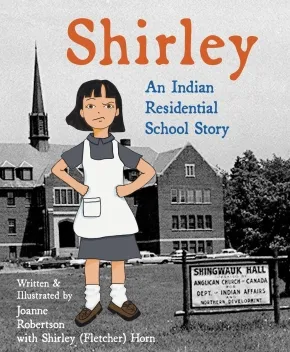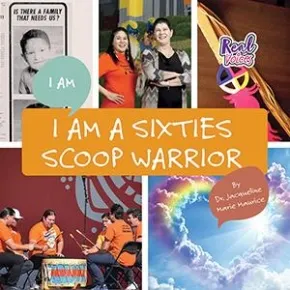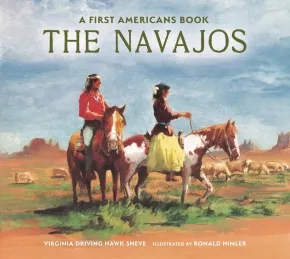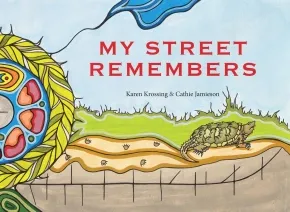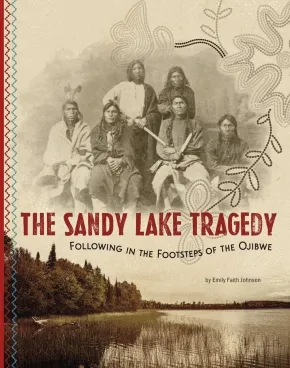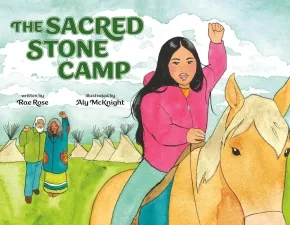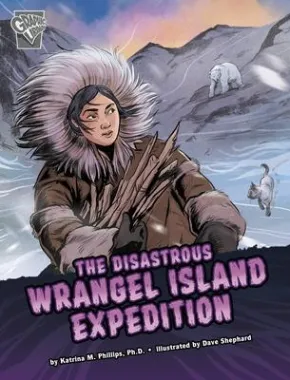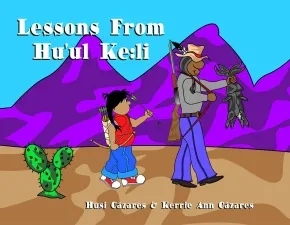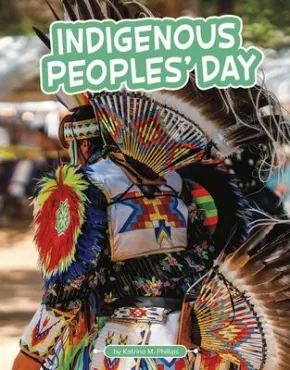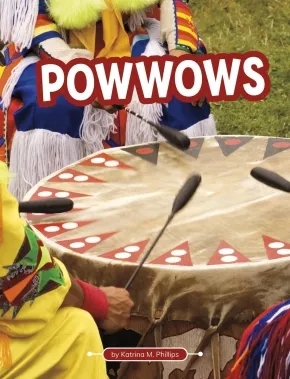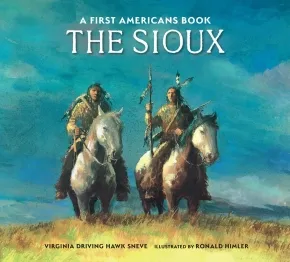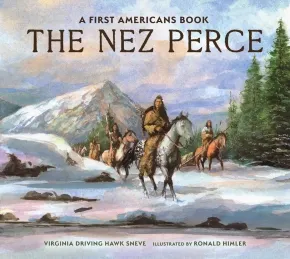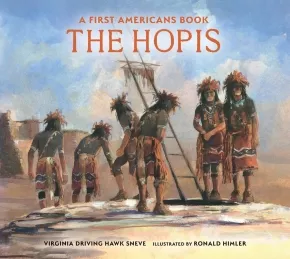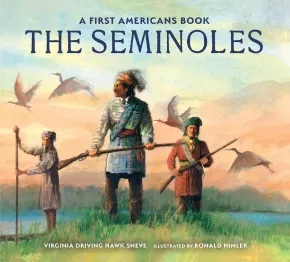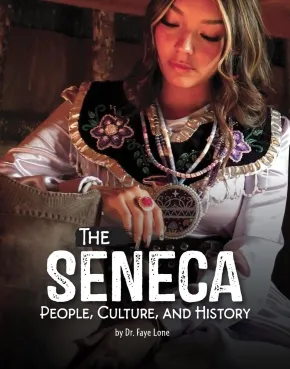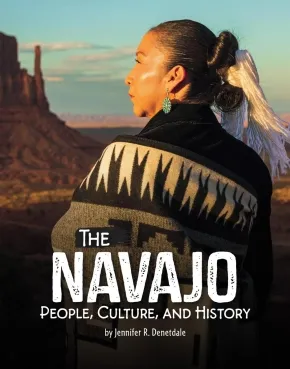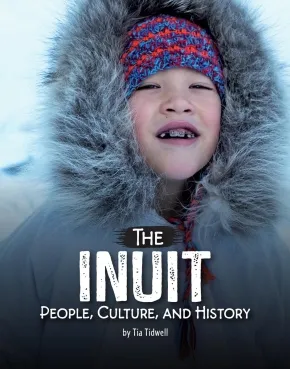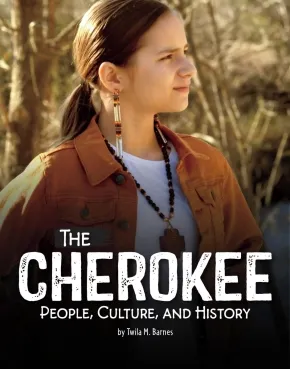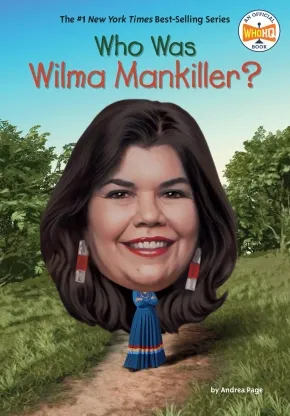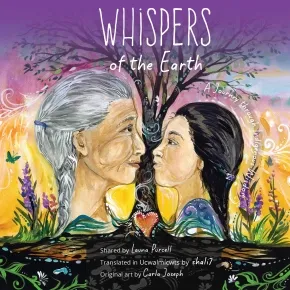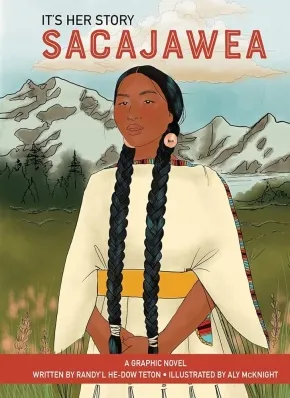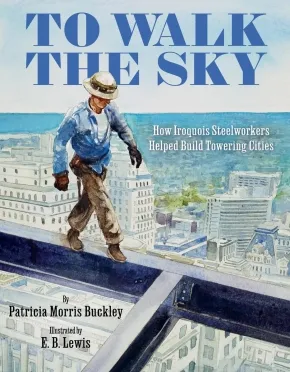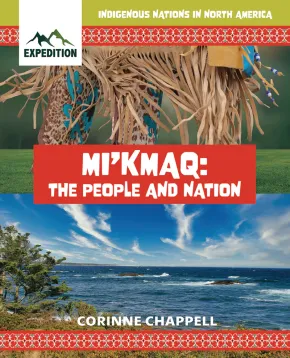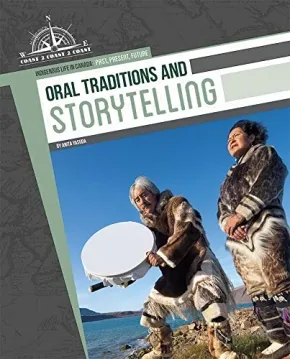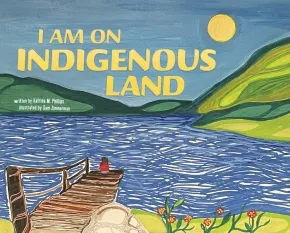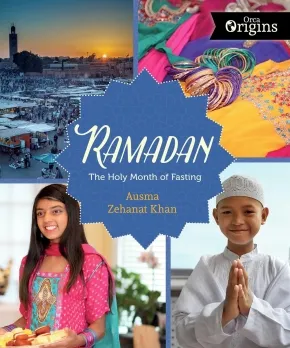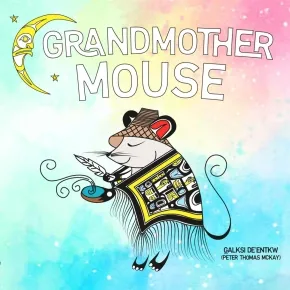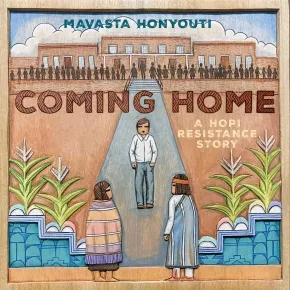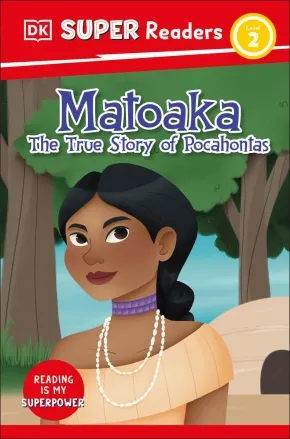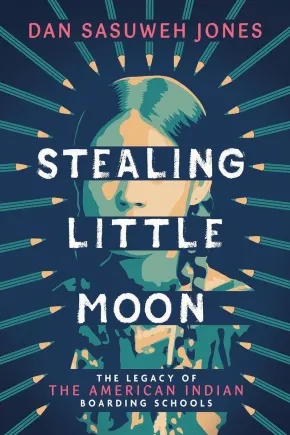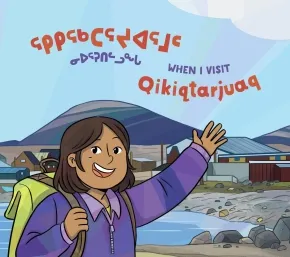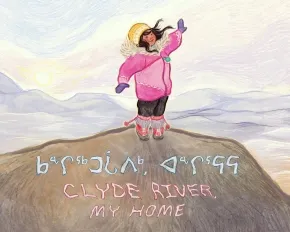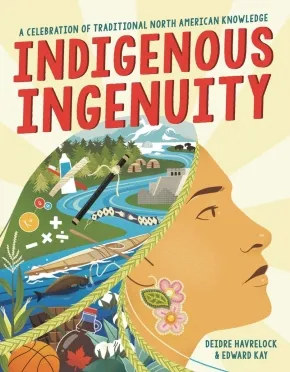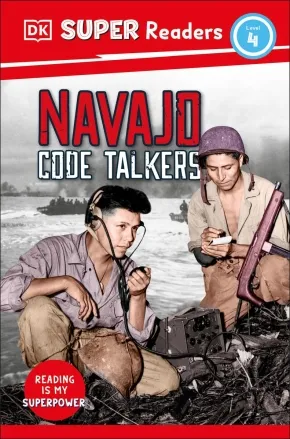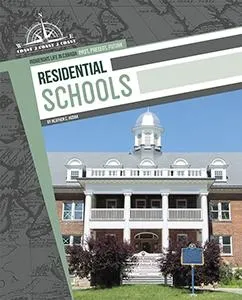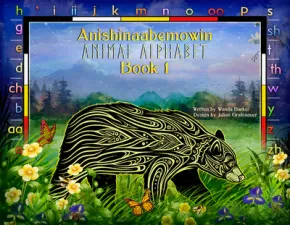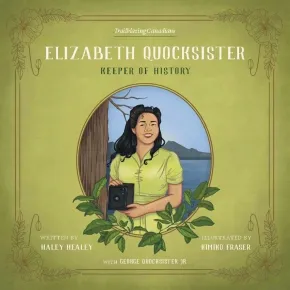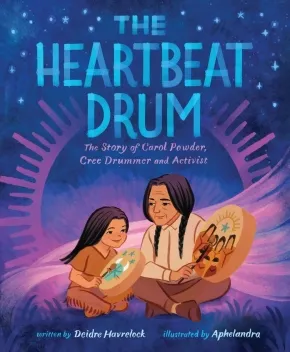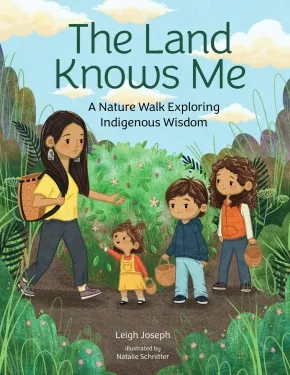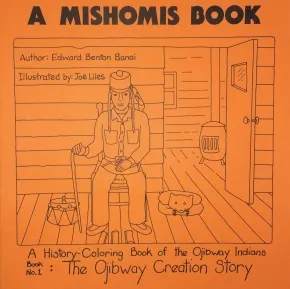
Social Studies
1
-
15
of
404 Results;
Sort By
Go To
of 27
Shirley: An Indian Residential School Story
$22.95
Format:
Paperback
Text Content Territories:
Indigenous Canadian; First Nations; Cree (Nehiyawak); Moose Cree; Missanabie Cree First Nation;
ISBN / Barcode: 9781772604542
Synopsis:
Synopsis:
Shirley is only five years old when she is taken away by the Indian agent to live at a residential school. She loves learning, but she is not there by choice. From the first day walking up the long, lonely stone steps of the school building, life is hard and full of rules. Separated from her brothers and sisters, she is truly on her own.
Shirley is very brave, but there is no one she loves to hold her at night when she is afraid. No one to tuck her in and comfort her. Shirley keeps going despite the sadness. She makes friends and has adventures. And most of all, she looks ahead to summertime, when she will be able to return to her family and the happiness of home.
A true story.
Reviews
"Through powerful words and illustrations, this book honors Shirley’s lived experiences at residential school while also highlighting her advocacy in ensuring that residential school histories are remembered and taught. Shirley offers an accessible entry point into a complex topic while centering Survivor voices. This book is a moving resource for educators and families committed to truth-telling and learning."- Krista McCracken, Researcher & Curator, Shingwauk Residential Schools Centre
Educator Information
Recommended for ages 9 to 12.
This book is available in French: Shirley: une histoire de pensionnat indien.
Additional Information
70 Pages | 7" x 8.5|" | Paperback
I Am a Sixties Scoop Warrior
$17.95
Format:
Paperback
Text Content Territories:
Indigenous Canadian; Métis;
ISBN / Barcode: 9781774569153
Synopsis:
Synopsis:
The Sixties Scoop is a dark part of Canada's history. Learn more about this time from someone who lived it. Jacqueline tells us more about her time as a child in the Sixties Scoop.
Educator Information
Juvenile Nonfiction
Additional Information
24 pages | Paperback
The Navajos
$13.99
Artists:
Format:
Paperback
Text Content Territories:
Indigenous American; Native American; Navajo (Diné);
ISBN / Barcode: 9780823460984
Synopsis:
Synopsis:
In this new and updated edition, award-winning author Virginia Driving Hawk Sneve introduces young readers to the Navajo peoples.
Did you know that Navajo children were given their own lambs to signal their transition into adulthood? Learn about the Navajo’s creation story, resistance and resilience against Spanish colonizers, forked-stick hogan homes, sand paintings, and more.
Expertly reviewed by a member of the Navajo tribe, this updated edition provides the most up to date and accurate information on the Navajo people of the past and present. Historical information is accompanied by a section on modern life and contemporary photos
Educator & Series Information
Recommended for ages 7 to 10.
This book is part of the First Americans series.
Additional Information
32 pages | 10.50" x 9.50" | Paperback
The Cedar Mother
$24.95
Artists:
Format:
Hardcover
Text Content Territories:
Indigenous Canadian; First Nations; Gitxsan (Gitksan);
ISBN / Barcode: 9781774921586
Synopsis:
Synopsis:
From small sapling to towering giant, follow the long life of a cedar tree in this illustrated book for young scientists.
Step outside to explore the hidden mysteries of the cedar tree life cycle in this beautifully illustrated, engaging non-fiction book for young scientists ages 9 to 12.
Meet Nox Sim Gan, the cedar mother, whose life cycle spans centuries and whose roots anchor the landscape. The cedar mother plays a vital role in the ecosystem: offering shelter for birds in her strong limbs, providing refuge for small creatures beneath her bark, and healing the Gitxsan with a medicinal tea made from her soft, green leaves. She also creates the very oxygen that all land-dwelling creatures need to breathe.
Delve into the remarkable story of the western red cedar as you learn how she nourishes herself through an unexpected connection to salmon, the secret web of life that thrives beneath the ground, and how, at the end of her life, she leaves a final gift for the Gitxsan. This book invites young readers to discover the life of a tree that is much more than meets the eye, offering lessons in interconnectedness, and in wisdom passed down through generations.
Educator & Series Information
Recommended for ages 9 to 12.
Lexile measure: 1050L
This book is part of the Mother of Xsan series, which uses striking illustration and lyrical language to bring the poetry of the Xsan ecosystem to life. It is the eighth book in the series.
Additional Information
32 pages | 6.50" x 10.00" | Hardcover
My Street Remembers
$21.99
Format:
Hardcover
Text Content Territories:
Indigenous Canadian;
ISBN / Barcode: 9781773066356
Synopsis:
Synopsis:
How many footsteps have walked your street in the past? My Street Remembers peels back the history of one city street in North America to reveal the greater story of the land on which we live.
The story begins 14,000 years ago, when mammoths roamed the icefields, and the First Peoples followed their trail. Historically accurate illustrations show the lives of their descendants over thousands of years as they hunted and gathered food, built homes and celebrated together, until the 1600s, when Europeans arrived with settlers in their wake.
In lyrical text, the street remembers agreements to live in peace, the efforts of the British to take the land with unfair treaties, and the conflict and suffering that followed. The street recalls its naming, paving and the waves of immigrants who called it home. Illustrations of recent times depict Canada's apology to Indigenous Peoples and efforts toward Truth and Reconciliation, including a march with a banner that reads: Every Child Matters.
This rich collaboration between author Karen Krossing, of White settler descent, and Anishinaabe artist Cathie Jamieson ends with a question that readers anywhere can ask-what does your street remember?
Reviews
"A thoughtful overview and reflection on the life and legacy of a busy street." — Booklist
Educator Information
Recommended for ages 3 to 6.
This book is part of the Better Path series.
Reading Levels: Lexile NC940L
Key Text Features:
- author's note
- bibliography
- captions
- explanation
- facts
- flags
- further information
- historical context
- historical note
- illustrations
- illustrator's notes
- sources
- timeline
- vignettes
- writing inspiration
Correlates to the Common Core State Standards in English Language Arts:
CCSS.ELA-LITERACY.RL.1.3
Describe characters, settings, and major events in a story, using key details.
Additional Information
48 pages | 11.00" x 8.00" | Hardcover
The Sandy Lake Tragedy: Following in the Footsteps of the Ojibwe
$13.99
Format:
Paperback
Text Content Territories:
Indigenous American; Native American; Anishinaabeg; Ojibwe (Chippewa);
ISBN / Barcode: 9798875206146
Synopsis:
Synopsis:
In 1850, 5,000 Ojibwe people were forced to make a dangerous journey across the Midwest to get treaty payments owed to them from the U. S. Government. But the payments never came, and the Ojibwe had to travel back home through treacherous winter conditions and without the money or supplies they had been promised. More than 400 Ojibwe lost their lives in this event that is now known as the Ojibwe Trail of Tears. Compelling narrative and impactful images help to recount the injustices of this forced removal and explain how it happened, what the many consequences were, how the Ojibwe people responded, and why this tragedy is still vitally relevant today. Author Emily Faith Johnson (Sault St. Marie Chippewa member) shares this not-to-be-forgotten story with young readers and educators seeking a closer look at U.S. history.
Educator Information
Recommended for ages 8 to 12.
Additional Information
32 pages | 8.00" x 10.00" | Paperback
The Sacred Stone Camp
$24.99
Artists:
Format:
Hardcover
Text Content Territories:
Indigenous American; Native American; Sioux; Dakota; Lakota;
ISBN / Barcode: 9780593696637
Synopsis:
Synopsis:
A stunning account of the Sacred Stone Camp's first day, where Indigenous activist LaDonna BraveBull Allard gathered water protectors to protest the Dakota Access Pipeline
The land is sacred to the people. The people are sacred to the land.
As Water Protectors gather to defend the water and protect the land against a black snake that threatens the rivers that millions of people depend on, a young girl looks to her Unci LaDonna and Lala Miles who are leading the way to the camp.
Although she’s nervous about what might happen next, she finds strength from her family and the strangers all coming together to stand up for what’s right.
Written with love by Rae Rose, who shares many memories with LaDonna, this is a deeply moving tribute to LaDonna’s work and impact with stunning watercolor illustrations by Aly McKnight.
Educator Information
Recommended for ages 5 to 9.
Additional Information
40 pages | 11.00" x 8.50" | Hardcover
Across the Ice: How We Saved the Ojibwe Horse
$24.99
Artists:
Format:
Hardcover
Text Content Territories:
Indigenous Canadian; First Nations; Anishinaabeg; Ojibway; Saulteaux; Lac La Croix First Nation (Gakijiwanong);
ISBN / Barcode: 9781536229455
Synopsis:
Synopsis:
Discover the history of the endangered Ojibwe horse and the daring intervention of the Lac La Croix First Nation in this celebration of community, tradition, courage, and hope.
It’s a cold, snowy night at Lac La Croix First Nation, and two siblings are too excited to fall asleep. The horses are coming tonight! Amid the buzz of aunties and uncles and cousins, Nookomis tells a story that began many years ago, when their people shared the land with herds of wild ponies. In a symbiotic relationship, the people provided the horses with food and shelter, while the horses helped them run traplines and travel. But after many years had passed, and the herd had dwindled to four, the government threatened to shoot them. It was time to move the remaining horses to safety—but getting them there would be harder than they thought! Follow the true story of a “heist across the ice” from Ontario to Minnesota and learn how a small herd of hardy, indigenous horses returned years later to their native land. Rich illustrations honor the life of the Ojibwe people over time, as well as the land and living things that have survived under their stewardship.
Educator Information
Recommended for ages 3 to 7.
Additional Information
32 pages | 9.62" x 10.62" | Hardcover
The Disastrous Wrangel Island Expedition
$11.99
Artists:
Format:
Paperback
Text Content Territories:
Indigenous American; Alaska Native; Inupiat (Alaskan Inuit);
ISBN / Barcode: 9781666322361
Synopsis:
Synopsis:
In 1921, Inupait seamstress Ada Blackjack joined a a group of four white men who wanted to establish a trading post on Wrangel Island in the freezing Arctic Ocean. The explorers were stranded on the island when their return ship was forced to turn back due to ice. Facing harsh conditions and dwindling food supplies, the men died one by one, but Ada remained. Find out how she alone managed to survive the disastrous expedition.
Reviews
"The lesser-known 1921 Wrangel Island Expedition is chronicled in this graphic novel.... The book begins by introducing its two key players: Ada Blackjack (a young Inuit single mother from Nome, Alaska) and Vilhjalmur Steffansson (an aging white explorer of Icelandic heritage). Steffansson was determined to establish a European colony on Wrangel Island, off the coast of Siberia. He assembled a five-man team of explorers, and Blackjack, desperate for money, joined them. While the writing is a bit stilted, the artwork makes the tale quite lively, especially once the expedition reaches the uninhabited island. Readers will become engrossed in the team’s efforts to survive and be impressed with how Blackjack proves herself the most capable person there; indeed, she’s the sole survivor. A map and additional information conclude."— Julia Smith, Booklist
Educator Information
Recommended for ages 8 to 11.
Additional Information
32 pages | 7.00" x 9.00" | Paperback
Lessons From Hu'ul Ke:li
$19.95
Artists:
Format:
Hardcover
Text Content Territories:
Indigenous American; Native American; Tohono O'oodam;
ISBN / Barcode: 9798992176315
Synopsis:
Synopsis:
How a young boy is raised by his grandfather on the Tohono O'odham Indian Reservation. The book denotes various aspects of O'odham himdag (culture) and begins with a simple question that the boy asks his Hu'ul Ke:li (Grandfather) with a culturally relevant answer as to why they do the things they do during the day. Various activities include waking up early in the morning and asking why they do so - to daily chores and activities such as tending horses, working in the garden, hauling water, and gathering food/medicine in the desert.
Educator & Series Information
Recommended for ages 3 to 5 by the publisher, but this book contains a lot of text and may be more suitable for older children.
This book includes many O'odham words, but it is not a dual-language book. A glossary is included.
This book is part of the Tohono O'odham series.
Subjects / Themes: Family, Daily Life, Health, Home, Culture
Additional Information
48 pages | 11.00" x 9.00" | colour illustrations | Hardcover
A Day With Hu'ul
$19.95
Artists:
Format:
Hardcover
Text Content Territories:
Indigenous American; Native American; Tohono O'oodam;
ISBN / Barcode: 9798992176308
Synopsis:
Synopsis:
Grandmother, Why do we do the things we do?
How a young girl is raised by her grandmother on the Tohono O'odham Indian Reservation. The book denotes various aspects of O'odham himdag (culture) and begins with waking up in the morning and then preparing for the day and engaging in several different responsibilities. Various daily chores and activities such as preparation of different food, basket weaving, pottery making, household chores and cultural undertakings are highlighted.
Educator & Series Information
Recommended for ages 3 to 5 by the publisher, but this book contains a lot of text and may be more suitable for older children.
This book includes many O'odham words, but it is not a dual-language book. A glossary is included. O'odham is a Native American language spoken by several tribes in the American Southwest and Northern Sonoran Mexico.
This book is part of the Tohono O'odham series.
Subjects / Themes: Daily Life, Home, Family, Community, Culture
Additional Information
48 pages | 11.00" x 9.00" | colour illustrations | Hardcover
Indigenous Peoples' Day
$11.99
Format:
Paperback
Text Content Territories:
Indigenous American;
ISBN / Barcode: 9781663926340
Synopsis:
Synopsis:
Indigenous Peoples' Day is about celebrating! The second Monday in October is a day to honor Native American people, their histories, and cultures. People mark the day with food, dancing, and songs. Readers will discover how a shared holiday can have multiple traditions and be celebrated in all sorts of ways.
Awards
- 2022 American Indian Library Association winner
Educator Information
Recommended for ages 5 to 8.
This book is about Indigenous Peoples' Day in the United States.
Additional Information
32 pages | 7.00" x 9.00" | Paperback
Powwows
$11.99
Format:
Paperback
Text Content Territories:
Indigenous American; Native American;
ISBN / Barcode: 9798875220005
Synopsis:
Synopsis:
Powwows are about dancing! Indigenous people in America come together at powwows to celebrate their culture and traditions with drumming, singing, and dancing. Together they remember their history and honor their ancestors. Dancers show off their best moves and fancy regalia in dances that tell stories or remember important moments in history. Lively photos and easy-to-read text help readers learn about contemporary powwow dances and traditions and their roots in the past. Readers will discover how Indigenous traditions honor the past and celebrate the present.
Educator Information
Recommended for ages 5 to 8.
Additional Information
32 pages | 7.00" x 9.00" | Paperback
The Sioux
$12.49
Artists:
Format:
Paperback
Text Content Territories:
Indigenous American; Native American; Sioux;
ISBN / Barcode: 9780823460953
Synopsis:
Synopsis:
Award-winning author Virginia Driving Hawk Sneve introduces young readers to the Sioux peoples.
The buffalo was the center of Sioux life. After hunting buffalo on horseback, the Sioux people would use every piece of the animal, making food, beds, clothing, storage boxes, and even sleds from the ribs! Discover how the Sioux people lived on the Great Plains with this accessible introduction. Learn about the Sioux creation story, life in the village as a kid, the importance of their feathered headdresses, and more.
This updated edition provides the most up to date and accurate information on the Sioux people of past and present. The back of the book includes a section on Sioux life today, proper names for all of the Sioux tribes, and an excerpt from the Lakota pipe ceremony.
Educator & Series Information
Recommended for ages 7 to 10.
This book is part of the First Americans series.
Additional Information
32 pages | 10.55" x 9.47" | Paperback
The Nez Perce
$12.49
Artists:
Format:
Paperback
Text Content Territories:
Indigenous American; Native American; Nez Percé (Nimi’ipuu);
ISBN / Barcode: 9780823460960
Synopsis:
Synopsis:
Award-winning author Virginia Driving Hawk Sneve introduces young readers to the Nez Perce peoples.
Did you know that the Nez Perce believed that humans had to seek a spirit helper to find their purpose in life through a vision? Learn about the Nez Perce’s creation story, history, belief, daily ways of living, introduction to the horse, and more in this accessible introduction.
Expertly reviewed by a member of the Nez Perce tribe, this updated edition provides the most up to date and accurate information on the Nez Perce people of the past and present. Historical information is accompanied by a letter from a member of the Nez Perce tribe and a section on modern life.
Educator & Series Information
Recommended for ages 7 to 10.
This book is part of the First Americans series.
Additional Information
32 pages | 10.5" x 9.5" | Paperback
The Hopis
$12.49
Artists:
Format:
Paperback
Text Content Territories:
Indigenous American; Native American; Hopi;
ISBN / Barcode: 9780823460946
Synopsis:
Synopsis:
Award-winning author Virginia Driving Hawk Sneve introduces young readers to the Hopi people.
Did you know that the Hopi people have always lived on three mesas, big flat-topped hills, in Arizona? This accessible nonfiction picture book introduces the Hopis’ creation story, history, beliefs, daily ways of life, and more. Learn about the Hopi secret societies, underground kivas, kachina masks, the snake dance, and more.
Expertly reviewed by members of the Hopi tribe, this updated edition provides the most up to date and accurate information on the Hopi people of the past and present. Historical information is accompanied by a section on modern life.
Educator & Series Information
Recommended for ages 7 to 10.
This book is part of the First Americans series.
Additional Information
32 pages | 10.50" x 9.50" | Paperback
The Seminoles
$12.49
Artists:
Format:
Paperback
Text Content Territories:
Indigenous American; Native American; Seminole;
ISBN / Barcode: 9780823460939
Synopsis:
Synopsis:
Award-winning author Virginia Driving Hawk Sneve introduces young readers to the Seminoles people.
The Seminoles are known as “the people who never surrendered.” As White settlers continued to encroach on their land, the Seminoles moved farther and farther into the Florida Everglades and adapted to their new environment with their hard work and ingenuity. And after defending their land in three Seminole wars, they never signed a formal peace treaty with the United States.
This accessible nonfiction picture book introduces the Seminoles’ early history, daily way of life, ceremonies, and more. Learn how they adapted to the Florida Everglades and their unique cultural practices, like their flat roll hairstyle and the role of an ever-burning fire in the annual Green Corn Dance. This updated edition provides the most up to date and accurate information on the Seminole people of past and present. The back of the book includes a section on Seminole life today.
Educator & Series Information
Recommended for ages 7 to 10.
This book is part of the First Americans series.
Additional Information
32 pages | 10.55" x 9.47" | Paperback
The Seneca: People, Culture, and History
$11.99
Format:
Paperback
Text Content Territories:
Indigenous American; Native American; Haudenosaunee (Iroquois); Seneca;
ISBN / Barcode: 9798875208614
Synopsis:
Synopsis:
Strong kinship, rich stories, and lasting traditions—that’s the Seneca Nation. In this engaging nonfiction book for young readers, discover more about the people, places, and practices that connect Seneca communities across the Haudenosaunee Confederacy. Learn how the Seneca people thrive today by safeguarding their language, maintaining customs, and honoring their heritage through ceremonies and council gatherings. Through interactive activities and engaging features—including maps, timelines, recipes, and stories—Seneca author Dr. Faye Lone offers young readers a window into the past, present, and future of this enduring culture.
Educator & Series Information
Recommended for ages 8 to 11.
This book is part of the Indigenous Peoples series.
Additional Information
32 pages | 7.00" x 9.00" | Paperback
The Lakota: People, Culture, and History
$11.99
Format:
Paperback
Text Content Territories:
Indigenous American; Native American; Sioux; Lakota;
ISBN / Barcode: 9798875208379
Synopsis:
Synopsis:
Time-honored values, majestic landscapes, and a resilient spirit—that's the Lakota Nation. In this insightful nonfiction book for young readers, discover more about the people, places, and heritage of Lakota communities across the Northern Plains. Explore how the Lakota people continue to thrive by preserving their language, practicing timeless traditions, and celebrating respected ceremonies, like the annual Sun Dance, which brings relatives together in community and prayer. Through interactive activities and engaging features—including maps, timelines, recipes, and crafts—Lakota author Tracy Hauff introduces young learners to the past, present, and future of this vibrant culture.
Educator & Series Information
Recommended for ages 8 to 11.
This book is part of the Indigenous Peoples series.
Additional Information
32 pages | 7.00" x 9.00" | Paperback
The Navajo: People, Culture, and History
$11.99
Format:
Paperback
Text Content Territories:
Indigenous American; Native American; Navajo (Diné);
ISBN / Barcode: 9798875208454
Synopsis:
Synopsis:
Spiritual ceremonies, powerful storytelling, and timeless wisdom—that’s the Navajo Nation. In this captivating nonfiction book for young readers, discover more about the people, places, and traditions that unify the Navajo Nation. Learn how the Navajo people continue to thrive in the Southwest by preserving their language, celebrating cultural practices, and participating in meaningful ceremonies, such as the Kinaaldá, a coming-of-age ritual for young women. Through interactive activities and engaging features—including maps, timelines, recipes, and crafts—Navajo author Jennifer R. Denetdale shares valuable insights into the past, present, and future of this resilient culture.
Educator & Series Information
Recommended for ages 8 to 11.
This book is part of the Indigenous Peoples series.
Additional Information
32 pages | 7.00" x 9.00" | Paperback
The Ojibwe: People, Culture, and History
$11.99
Format:
Paperback
Text Content Territories:
Indigenous American; Native American; Anishinaabeg; Ojibwe (Chippewa);
ISBN / Barcode: 9798875208539
Synopsis:
Synopsis:
Spirited powwows, close family ties, and a deep connection to the land—that’s the Ojibwe Nation. In this captivating nonfiction book for young readers, discover more about the people, places, and customs that shape Ojibwe life across the Great Lakes region. Uncover how the Ojibwe people continue to thrive by preserving their language, celebrating traditions, and gathering at powwows, where drumming, dancing, and storytelling keep their culture alive. Through interactive activities and engaging features—including maps, timelines, recipes, and crafts—Ojibwe author Kim Sigafus provides young learners with meaningful insights into the past, present, and future of this enduring culture.
Educator & Series Information
Recommended for ages 8 to 11.
This book is part of the Indigenous Peoples series.
Additional Information
32 pages | 7.00" x 9.00" | Paperback
The Inuit: People, Culture, and History
$11.99
Format:
Paperback
Text Content Territories:
Indigenous American; Alaska Native; Inupiat (Alaskan Inuit);
ISBN / Barcode: 9798875208294
Synopsis:
Synopsis:
Colorful celebrations, ancient histories, and enduring customs—that’s the Inuit people. In this insightful nonfiction book for young readers, discover more about the people, places, and customs that connect Inuit communities across the vast Arctic landscape. Explore how the Inuit people thrive in Earth’s northernmost regions by honoring their language, preserving traditional ways of life, and gathering for celebrations, such as Kivgiq, a joyful festival of music, drumming, and dance. Through interactive activities and engaging features—including maps, timelines, recipes, and stories—Iñupiaq author Tia Tidwell offers young learners valuable insights into the past, present, and future of this remarkable culture.
Educator & Series Information
Recommended for ages 8 to 11.
This book is part of the Indigenous Peoples series.
Additional Information
32 pages | 7.00" x 9.00" | Paperback
The Cherokee: People, Culture, and History
$11.99
Format:
Paperback
Text Content Territories:
Indigenous American; Native American; Cherokee;
ISBN / Barcode: 9798875208218
Synopsis:
Synopsis:
Vibrant traditions, rich histories, and strong voices—that’s the Cherokee Nation. In this inspiring nonfiction book for young readers, discover more about the people, places, and culture of one of the United States’ largest Indigenous groups. Explore how the Cherokee people still survive—and thrive—by safeguarding their language, reviving customs, and upholding celebrations, like the annual Cherokee National Holiday that honors their heritage. Through interactive activities and engaging features—including maps, timelines, recipes, and crafts—Cherokee author Twila M. Barnes provides young learners with important insights into the past, present, and future of the Cherokee people.
Educator & Series Information
Recommended for ages 8 to 11.
This book is part of the Indigenous Peoples series.
Additional Information
32 pages | 7.00" x 9.00" | Paperback
Who Was Wilma Mankiller?
$9.50
Format:
Paperback
Text Content Territories:
Indigenous American; Native American; Cherokee; Cherokee Nation (Cherokee Nation of Oklahoma);
ISBN / Barcode: 9780593888872
Synopsis:
Synopsis:
Learn about the life and legacy of the first woman to serve as principal chief of the Cherokee Nation! Wilma Mankiller's struggle for political change throughout her life will be sure to inspire readers in this addition to the #1 New York Times bestselling series.
Wilma Mankiller grew up immersed in the Cherokee community and culture of Oklahoma. When her family moved to San Francisco as part of the Indian Relocation Program, she had to quickly adjust to city life. Along the way, Wilma never lost her dedication to her people and their centuries-old traditions. She grew up to become a major political activist. From aiding the Occupation of Alcatraz in 1969 to making history as the first woman principal chief of the Cherokee Nation in 1985, Wilma never wavered in her support for her community. She spent her life fighting for the rights of Native Americans and inspires political activism to this day.
Educator Information
Recommended for ages 8 to 12.
Additional Information
112 pages | 5.31" x 7.62" | Paperback
Whispers of the Earth: A Journey through Indigenous Wisdom
$29.00
Artists:
Format:
Paperback
Text Content Territories:
Indigenous Canadian; First Nations; Salish; Interior Salish; St'at'imc (Lillooet, Lil'Wat);
ISBN / Barcode: 978-1-73869-534-8
Synopsis:
Synopsis:
Prepare to embark on a journey rich with the wisdom of our ancestors and the secrets shared by Mother Earth.
In this children’s book, you will follow a path once tread by those before us, where the songs of the trees, the dance of the rivers, and our stories are carried by the wind. These teachings are invaluable treasures passed down through generations.
You’ll discover the language of animals, the lessons of plants, and the wisdom of the land. If you listen closely, you will hear the “Whispers of the Earth,” guiding you on this incredible adventure.
Educator Information
Recommended for kindergarten to grade 7.
Carl Sam advised on the language, and is “Ha7li” of the Bear Clan from Skookumchuck, part of St’at’icmulh Nation, sometimes referred to as the Interior Salish. Through this book, he shares elements of the Ucwalmícwts language.
Includes some words in Ucwalmícwts.
Additional Information
60 pages | 20 × 20 × 1 cm | Paperback | Printed locally on 100% post-consumer recycled paper.
Anishinaabek: The People and Nations
$16.95
Format:
Paperback
Text Content Territories:
Indigenous Canadian; First Nations; Anishinaabeg;
ISBN / Barcode: 9781774565100
Synopsis:
Synopsis:
The Anishinaabek are a rich nation with teachings and practices passed down from generation to generation. Explore more about the people and nations through Anishinaabek author Jennifer Meness.
Educator & Series Information
This book is part of the Indigenous Nations in North America series.
Additional Information
32 Pages | Paperback
All about Sanikiluaq
$16.95
Artists:
Format:
Paperback
Text Content Territories:
Indigenous Canadian; Inuit;
Grade Levels: Preschool; Kindergarten;
ISBN / Barcode: 9781774508084
Synopsis:
Synopsis:
Learn about the southernmost community of Nunavut in this educational picture book.
Did you know that Sanikiluaq, Nunavut is named after a great hunter and leader? Or that it is the most southern community in Nunavut? You can even see wildlife like polar bears, eider ducks, foxes, and more nearby. Discover the many reasons that people in Sanikiluaq love their home in this bilingual picture book.
Reviews
"This book is written in Inuktitut and English, explaining Sanikiluaq, the southernmost community in Nunavut. It describes the history of the community, the animals that live in the area and introduces Inuit food acquisition practices such as whaling, fishing, hunting, and gathering. Cultural activities such as making carvings, baskets, and clothing are also explored. For younger students, the information is helpful for learning about Inuit culture as well as the importance of the Inuit and places before the land was settled and given non-Inuktitut names, such as the Belcher Islands." - Alethea S., Elementary School Teacher, Indigenous Books for Schools
Educator & Series Information
Recommended for ages 3 to 5.
Dual-language: English and Inuktitut
This book is part of the Community Connections series.
This title is included in the Indigenous Books for Schools database from the Association of Book Publishers of BC as a recommended resource for K to 5 English Language Arts, Science, and Social Studies.
Additional Information
21 pages | 8.00" x 9.00" | Paperback
It's Her Story Sacajawea: A Graphic Novel (7 in Stock)
$37.50
Artists:
ISBN / Barcode: 9798765402962
Synopsis:
Synopsis:
A graphic novel for children ages 7 to 10. Sacajawea was a brilliant, multilingual Shoshone girl who was torn from her home at a young age. In 1804, she set out with the Lewis and Clark Expedition, acting as an interpreter and guide across hundreds of miles of unmapped land to reach the Pacific Ocean. Almost 200 years later, she became the first Indigenous woman to appear on a US coin. This is her story.
Educator Information
Recommended for ages 7 to 10.
Additional Information
42 Pages | 6.5o" x 8.10 | Library Binding
To Walk the Sky: How Iroquois Steelworkers Helped Build Towering Cities
$24.99
Artists:
Format:
Hardcover
ISBN / Barcode: 9780063046979
Synopsis:
Synopsis:
Look to the sky!
High above the ground, generation after generation, Native workers called skywalkers have sculpted city skylines, balancing on narrow beams, facing down terrifying heights and heartbreaking loss. These skywalkers who dared to touch the heavens have built a legacy of landmarks all over the North American continent—and even today, there are Native Americans still climbing up among the clouds, brave enough to walk the sky.
With impactful and illuminating prose, Patricia Morris Buckley (Mohawk) tells the soaring story of the remarkable skywalkers, whose bravery and tragedies are warmly captured in moving watercolors by award-winning artist E. B. Lewis (Lenni-Lenape).
Reviews
"By turns solemnly reverent and enthusiastic, Buckley’s elegant text will leave young people keenly aware of the historical and present-day significance of these groundbreaking workers, as well as their strength and resilience. Awe-inspiring." — Kirkus Reviews (starred review)
"Graceful language honors skywalkers throughout this stirring telling, while fluidly rendered watercolor illustrations in a desaturated color palette employ sweeping perspective and scale." — Publishers Weekly (starred review)
"This fascinating narrative provides an in-depth history of skywalkers, the Caughnawaga, and their contributions to our cities and infrastructure." — School Library Journal (starred review)
"The text, even with all its facts and figures, is deeply emotional, capturing the giddy danger of skywalking, the relentless need to better one’s life, and the sorrow in a preventable tragedy...blurring faces and bodies in a way that emphasizes the comradery and connection between the workers." — Bulletin of the Center for Children’s Books
"Here, a descendant of one of the 75 workers who died in the 1907 collapse of the Quebec Bridge pays eloquent tribute to the first generation of Mohawk “skywalkers” who came out of the Caughnawaga (later Kahnawà:ke) reserve in Canada." — Booklist
Educator Information
Recommended for ages 4 to 8.
Additional Information
40 pages | 8.50" x 11.00" | Hardcover
Mi'kmaq: The People and Nation
$16.95
Format:
Paperback
Text Content Territories:
Indigenous Canadian; First Nations; Mi'kmaq (Mi'gmaq);
ISBN / Barcode: 9781774567708
Synopsis:
Synopsis:
The Mi'kmaq have many practices in their culture which make them unique. Discover more about the people and nation through Mi'kmaq author Corinne Chappell.
Educator & Series Information
This book is part of the Indigenous Nations in North America series.
Additional Information
32 Pages | Paperback
Oral Traditions and Storytelling
$16.95
Format:
Paperback
Text Content Territories:
Indigenous Canadian;
ISBN / Barcode: 9781773081809
Synopsis:
Synopsis:
This book explores oral traditions and storytelling.
Educator Information
Juvenile Nonfiction
Indigenous Consultant: Agnes Pawlowska-Mainville.
Table of Contents
Chapter One - Knowledge Keepers
Chapter Two - Origin Stories
Chapter Three - History and Place Names
Chapter Four - Remembering Oral Traditions
Chapter Five - Recalling History through Song
Chapter Six - Contemporary Voices and Storytelling
Glossary
To Learn More
Index
About the Author
Additional Information
32 Pages
The Sky's The Limit!: Canadians Who Blazed a Trail in Aviation
$19.95
Format:
Paperback
Text Content Territories:
Indigenous Canadian; First Nations; Cree (Nehiyawak); Swampy Cree ; Opaskwayak; Dene; Dinjii Zhuh (Gwich'in);
ISBN / Barcode: 9781774712672
Synopsis:
Synopsis:
This action-packed, full-colour middle-grade non-fiction book opens up the world of aviation to youth from diverse backgrounds, through the incredible stories of Canadians who broke barriers to reach the sky—from Newfoundland and Labrador to Manitoba to the Yukon.
From commercial, transport, and military pilots to search-and-rescue helicopter pilots to airplane mechanics, The Sky's the Limit! introduces readers to inspiring contemporary aviators, including commercial pilot Captain Mohamed Samanter, Gwich'in pilot Fred Carmichael, and Kimberly Ballantyne, the first woman of the Opaskwayak Cree Nation to become a pilot. Along the way, readers will learn important context about the history of flight in Canada, including the Royal Canadian Air Force, the Black soldiers of the No. 2 Construction Battalion, military pilot Allan Selwyn Bundy—one of only two known Black Canadian combat pilots who flew during the Second World War—and many more.
Educator Information
Recommended for ages 7 to 10.
Featuring sidebars, profiles of various aircraft, photographs, illustrations, as well as a glossary and bibliography, The Sky’s the Limit! is a much needed STEAM resource for young readers interested in a career in aviation, and an inspiring story for the millions of kids who haven’t seen themselves represented in the skies.
Includes some Indigenous content.
Additional Information
88 Pages | 50+ Colour Images | Paperback
I Am on Indigenous Land
$25.99
Format:
Hardcover
Text Content Territories:
Indigenous American; Native American; Shawnee; Seminole; Salish; Coast Salish; Nisqually; Navajo (Diné); Ho-Chunk (Winnebago); Haudenosaunee (Iroquois); Tuscarora; Chickasaw; Blackfoot Confederacy (Siksikaitsitapi); Anishinaabeg; Ojibwe (Chippewa); Indigenous Caribbean; Taino;
ISBN / Barcode: 9781684363087
Synopsis:
Synopsis:
With simple, lyrical text and vibrant panoramic illustrations, this picture book explores the beauty and resources of thirteen ancestral Indigenous lands and how we all use those lands each day. Simple poetry and portrayals of children and families enjoying rivers, bike paths, beaches, and parks show how everyday activities can include honoring Indigenous nations and cultures.
Author Katrina Phillips (Ojibwe citizen) and illustrator Sam Zimmerman (Ojibwe direct descendant) together have crafted a loving tribute that gently demonstrates recognition and acknowledgement of the nations of people who first called these lands home.
Educator Information
Recommended for ages 3 to 9.
Additional Information
32 pages | 10.00" x 8.00" | Hardcover
Ramadan: The Holy Month of Fasting (PB)
$18.95
Format:
Paperback
ISBN / Barcode: 9781459841888
Synopsis:
Synopsis:
The month of Ramadan offers the opportunity to improve one's personal and spiritual behavior.
By focusing on positive thoughts and actions, Muslims build a closer connection with God and come away from the month feeling spiritually renewed. Ramadan: The Holy Month of Fasting explores the richness and diversity of the Islamic tradition by focusing on an event of great spiritual significance and beauty in the lives of Muslims. Rich with personal stories and stunning photographs, Ramadan demystifies the traditions and emphasizes the importance of diversity in a world where Islamophobia is on the rise.
Reviews
"The personal perspectives elevate this volume above an average informational book; readers, both non-Muslims and Muslims, can step into the shoes of someone from another background. Wide in scope and personal in presentation, this book is a good choice for learning about Muslims' traditions as expressed in various cultures."— Kirkus Reviews
"The book is sprinkled with many colourful photos of people praying and celebrating around the world, mosques, food and more which illustrate the joy that this holiday brings to Muslims…I would recommend Ramadan: The Holy Month of Fasting to children learning about Ramadan and the Muslim faith as well as to children who do celebrate this holiday as they will see a reflection of their lives in its pages. Recommended."— CM Magazine
"This is a comprehensive book of facts and experiences for any child who is learning about what it means to follow Islam. A solid choice for children seeking to learn more about the faith for assignments or to satisfy their own intellectual curiosity."— School Library Journal
"Ramadan provides a clear, accessible introduction to Ramadan and Islamic beliefs generally…This series has been insightfully planned and carried out: books like Khan's Ramadan make intercultural discovery and understanding fascinating and fun. I particularly like how prominent girls and women are in this text. And while the book is intended for kids, there are many adults who would benefit from reading it to dispel their misunderstandings. I emphatically recommend Ramadan: The Holy Month of Fasting to any class or community interested in reading for multicultural understanding."— Resource Links
Educator & Series Information
This book is part of the Orca Origins series that explores cultural celebrations throughout the world.
Recommended for ages 9 to 12.
Additional Information
88 pages | 7.50" x 9.00" | Paperback
Grandmother Mouse
$19.99
Artists:
Format:
Hardcover
ISBN / Barcode: 9781778540608
Synopsis:
Synopsis:
When the nighttime sky fills with stars, Grandmother Mouse awakens and begins her grounding ceremonies.
Inhale, exhale
Inhale, exhale
Inhale, exhale. . .
Gifted to the Nisg̱a'a People, Grandmother Mouse is a nurturing protector, tending to the hearts and minds of the people, the plants, the animals, and all of our relations. Imbuing the world with smudge, blessings, and affirmations, Grandmother Mouse is here to offer you gentle, yet profound, teachings so you may walk through life with good intention and strong spirit.
Educator Information
Recommended for ages 4+.
Additional Information
24 pages | 8.00" x 8.00" | Hardcover
Coming Home: A Hopi Resistance Story
$28.99
Artists:
Format:
Hardcover
ISBN / Barcode: 9781646144570
Synopsis:
Synopsis:
From master Hopi woodcarver Mavasta Honyouti, the story of his grandfather’s experience at a residential boarding school and how he returned home to pass their traditions down to future generations.
When Mavasta Honyouti was a boy he would go with his grandfather to their cornfield, watching him nurture every plant. During breaks, his grandfather would take out a piece of paako root and use his pocketknife to whittle away. He made beautiful carvings that Mavasta would later learn to do himself.
But Mavasta would often wonder: what was his kwa’a like when he was a boy? And one day, he heard the story.
Mavasta’s grandfather, like many Native American children across the country in the late 19th and early 20th century, was forced to leave his Hopi reservation as a child and go to a residential boarding school far away. There, the government cut his hair, punished him for speaking his native language, and gave him a new name. But Mavasta's grandfather never forgot who he was – or where he came from – and he tried to escape again and again. Finally, he made it back to their reservation.
In later years, Mavasta’s kwa’a chose a simple life, taking great care of his family just like he took great care of his plants. His son and later his grandson became acclaimed Hopi katsina woodcarvers, just like him. Coming Home: A Hopi Resistance Story is a deeply personal book – written in both English and Hopi – that features sixteen stunning original painted wood carvings. It is an unforgettable testament to one man rising above a painful piece of history to keep the light of his family and culture alive.
Educator Information
Recommended for ages 4 to 8.
Dual-language: English and Hopi.
Additional Information
48 pages | 9.00" x 9.20" | Hardcover
Matoaka: The True Story of Pocahontas
$6.99
Format:
Paperback
Text Content Territories:
Indigenous American; Native American; Powhatan; Pamunkey;
ISBN / Barcode: 9780744094510
Synopsis:
Synopsis:
Help your child power up their reading skills and learn all about the amazing life of Matoaka, better known today as Pocahontas, with this fun-filled nonfiction reader carefully leveled to help children progress.
This book tells readers the true story of this iconic American’s young life among the Pamunkey and later in Europe with her English husband. It is a motivating introduction to using essential nonfiction reading skills, proving ideal for children ready to enter the riveting world of reading.
Educator Information
Recommended for grades 2 and 3 (ages 7 to 9).
This book is a Level 2 DK Super Reader. These books take children on a journey through the wonderful world of nonfiction: traveling back to the time of dinosaurs, learning more about animals, exploring natural wonders and more, all while developing vital nonfiction reading skills and progressing from first words to reading confidently.
These books can help children practice reading by:
- Covering engaging, motivating, curriculum-aligned topics.
- Building knowledge while progressing Grades 2 and 3 reading skills.
- Developing subject vocabulary on topics such as the events and achievements in the life of Matoaka.
- Boosting understanding and retention through comprehension quizzes.
Each title, which has been leveled using MetaMetrics®: The Lexile Framework for Reading, integrates science, geography, history, and nature topics so there’s something for all children’s interests. The books and online content perfectly supplement core literacy programs and are mapped to the Common Core Standards. Children will love powering up their nonfiction reading skills and becoming reading heroes.
Additional Information
32 pages | 5.94" x 9.00" | Paperback
Stealing Little Moon: The Legacy of the American Indian Boarding Schools
$26.99
Format:
Hardcover
Text Content Territories:
Indigenous American; Native American; Ponca; Ponca Tribe of Indians of Oklahoma ;
ISBN / Barcode: 9781338889475
Synopsis:
Synopsis:
"Stealing Little Moon is both a moving family saga and an expertly told true story that all Americans should know." —Steve Sheinkin, New York Times bestselling author of Bomb and Undefeated
Little Moon There Are No Stars Tonight was four years old when armed federal agents showed up at her home and took her from her family. Under the authority of the government, she was sent away to a boarding school specifically created to strip her of her Ponca culture and teach her the ways of white society. Little Moon was one of thousands of Indigenous children forced to attend these schools across America and give up everything they'd ever known: family, friends, toys, clothing, food, customs, even their language. She would be the first of four generations of her family who would go to the Chilocco Indian Agricultural School.
Dan SaSuWeh Jones chronicles his family's time at Chilocco--starting with his grandmother Little Moon's arrival when the school first opened and ending with him working on the maintenance crew when the school shut down nearly one hundred years later. Together with the voices of students from other schools, both those who died and those who survived, Dan brings to light the lasting legacy of the boarding school era.
Part American history, part family history, Stealing Little Moon is a powerful look at the miseducation and the mistreatment of Indigenous kids, while celebrating their strength, resiliency, and courage--and the ultimate failure of the United States government to erase them.
Educator Information
Recommended for ages 9 to 12.
Additional Information
304 pages | 5.50" x 8.25" | Hardcover
When I Visit Qikiqtarjuaq
$16.95
Artists:
Format:
Paperback
Text Content Territories:
Indigenous Canadian; Inuit;
Grade Levels: Preschool; Kindergarten;
ISBN / Barcode: 9781774508053
Synopsis:
Synopsis:
"There are many things I would like to do and see with my friend in Qikiqtarjuaq."
Monica wants to visit her friend Mary in Qikiqtarjuaq, Nunavut. Monica likes to imagine all the fun they will have together there. Monica and Mary will go camping, fish for delicious Arctic char, and see the big icebergs around the community. There will be lots to do when Monica visits Qikiqtarjuaq in this bilingual picture book!
Educator & Series Information
Recommended for ages 3 to 5.
Dual-Language: English and Inuktitut.
This book is part of the Community Connections series.
Additional Information
19 pages | 8.00" x 9.00" | Paperback
Clyde River, My Home
$16.95
Artists:
Format:
Paperback
Grade Levels: Preschool; Kindergarten;
ISBN / Barcode: 9781774507711
Synopsis:
Synopsis:
Clyde River, Nunavut is a great place to live! In this bilingual picture book, Louise tells us about all the things she and her family like to do. With the annual fishing derby in the spring and Hamlet Day in the summer, there are lots of fun things to do throughout the year. Winter brings plenty of time to connect with people in the community and support each other. Learn about the different activities people do in each season in Clyde River, its landmarks, and the amazing wildlife you can see there, like bowhead whales.
Educator & Series Information
Recommended for ages 3 to 5.
Dual-Language: English & Inuktitut
This book is part of the Community Connections series.
Additional Information
27 pages | 8.00" x 10.00" | Paperback
Indigenous Ingenuity: A Celebration of Traditional North American Knowledge (PB)
$12.99
Artists:
Format:
Paperback
ISBN / Barcode: 9780316413435
Synopsis:
Synopsis:
Celebrate Indigenous thinkers and inventions with this beautifully designed, award-winning interactive nonfiction book—perfect for fans of Braiding Sweetgrass.
Corn. Chocolate. Fishing hooks. Boats that float. Insulated double-walled construction. Recorded history and folklore. Life-saving disinfectant. Forest fire management. Our lives would be unrecognizable without these, and countless other, scientific discoveries and technological inventions from Indigenous North Americans.
Spanning topics from transportation to civil engineering, hunting technologies, astronomy, brain surgery, architecture, and agriculture, Indigenous Ingenuity is a wide-ranging STEM offering that answers the call for Indigenous nonfiction by reappropriating hidden history. The book includes fun, simple activities and experiments that kids can do to better understand and enjoy the principles used by Indigenous inventors. Readers of all ages are invited to celebrate traditional North American Indigenous innovation, and to embrace the mindset of reciprocity, environmental responsibility, and the interconnectedness of all life.
Reviews
"An astonishing, exuberant treasure trove of history, science and hands-on activities that repeatedly begs the question: "Why didn't I know this?" Essential for kids and adults. We need this book." —Candace Fleming, award-winning author of The Rise and Fall of Charles Lindbergh and The Family Romanov
"This book will amaze readers and teachers as it demonstrates how pervasive and critical the history of Indigenous people is. A completely unique and important narrative not to be missed; readers and teachers will come away with a new appreciation for the myriad contributions Indigenous people have made."—SLJ, starred review
"A conversational tone invites readers to engage with this monumental collection . . . Curious readers will learn facts unique to individual tribal groups while gaining knowledge of STEM/STEAM concepts. An ambitious, appealing, and accessible work documenting and protecting valuable knowledge."—Kirkus Reviews
"Engaging and informative, this will be welcomed by both STEM and social studies curricula to help to correct prevailing narratives about Indigenous technology."—Booklist, starred review
"Via authoritative, meticulously researched prose, the creators detail Native peoples’ significant strides in scientific pursuits . . . [and] showcase Native tribes’ continual and enduring impact. Photographs, as well as interactive activities detailing recipes and science experiments, feature throughout, lending a hands-on approach to this clear and concise work."—Publishers Weekly
"This book is a valuable contribution to efforts to decolonize learning and introduce readers to the breadth of indigenous knowledge as practiced in widely disparate geographic zones."—Canadian Review of Materials
"An engaging and cleverly compiled guide to North American and Mesoamerican Indigenous innovation. STEM topics (housing, medicine, clothing, agriculture, and hunting among them) are compellingly and conversationally discussed."—Shelf Awareness
Educator Information
Recommended for ages 8 to 12.
Fountas & Pinnell Text Level Gradient: Z
Additional Information
288 pages | 6.95" x 9.00" | Paperback
Navajo Code Talkers
$6.99
Format:
Paperback
Text Content Territories:
Indigenous American; Native American; Navajo (Diné);
ISBN / Barcode: 9780744094473
Synopsis:
Synopsis:
Help your child power up their reading skills and learn all about the talented Navajo code talkers during World War II with this fun-filled nonfiction reader–carefully leveled to help children progress.
Navajo Code Talkers introduces kids to the Navajo code talkers sending top-secret messages in code based on their native languages during World War II—and is a motivating introduction to using essential nonfiction reading skills, proving ideal for children ready to enter the riveting world of reading.
Educator Information
This book is a Level 4 DK Super Reader. These books take children on a journey through the wonderful world of nonfiction: traveling back to the time of dinosaurs, learning more about animals, exploring natural wonders and more, all while developing vital nonfiction reading skills and progressing from first words to reading confidently.
The DK Super Readers series can help your child practice reading by:
- Covering engaging, motivating, curriculum-aligned topics.
- Building knowledge while progressing core Grade 4 and 5 reading skills.
- Developing subject vocabulary on topics such as inventions, inventors, and history.
- Boosting understanding and retention through comprehension quizzes.
Each title, which has been leveled using MetaMetrics®: The Lexile Framework for Reading, integrates science, geography, history, and nature topics so there’s something for all children’s interests. The books and online content perfectly supplement core literacy programs and are mapped to the Common Core Standards. Children will love powering up their nonfiction reading skills and becoming reading heroes.
Additional Information
64 pages | 5.94" x 9.00"
Residential Schools (6 in Stock)
$31.95
Text Content Territories:
Indigenous Canadian;
ISBN / Barcode: 9781773086040
Synopsis:
Synopsis:
This book is about residential schools.
Educator Information
Juvenile Nonfiction.
Additional Information
32 Pages | Library Binding
Housing and Infrastructure (2 in Stock)
$31.95
Text Content Territories:
Indigenous Canadian;
ISBN / Barcode: 9781773087979
Synopsis:
Synopsis:
Colour Photographs, Black & White photographs, and Illustrations, Table of Contents, Maps, Glossary, For Further Information, Side Bars, Framing Questions, Index and Web Sites are all included.
Educator Information
Juvenile Nonfiction.
Additional Information
32 Pages | Library Binding
Anishinaabemowin Animal Alphabet Book 1
$19.99
Artists:
Format:
Paperback
Text Content Territories:
Indigenous Canadian; First Nations; Anishinaabeg; Ojibway;
ISBN / Barcode: 9781990297526
Synopsis:
Synopsis:
Anishinaabe educator and author Wanda Barker, Bear Clan from Hollow Water First Nation brings her knowledge and fluency in Anishinaabemowin to language learners in her book Anishinaabemowin Animal Alphabet Book 1. This alphabet book focuses on the letters used in the double vowel writing system. The book focuses on learning the names of animals, information on the animals and their actions. A double vowel chart to learn the sounds and pronunciation is included.
Educator Information
Recommended for grades 1 to 3.
Additional Information
36 Pages
Elizabeth Quocksister: Keeper of History (PB)
$12.95
Artists:
Format:
Paperback
Text Content Territories:
Indigenous Canadian; First Nations; Kwakwaka'wakw (Kwakiutl); Da'naxda'xw Awaetlala;
ISBN / Barcode: 9781772034851
Synopsis:
Synopsis:
The uplifting true story of Elizabeth Quocksister, a strong Indigenous woman and community leader, who dedicated her life to protecting her language and cultural traditions.
Elizabeth Quocksister (1925–81) had many roles in her life. She was a cultural teacher, a community leader, a dancer, a nurse, a photographer, a residential school survivor, and a mother of ten. Born on the Da’naxda’xw Nation on Knight Inlet on the central coast of British Columbia, Elizabeth spoke fluent Kwak’wala and proudly celebrated her Kwakwaka’wakw culture at a time when the Canadian government actively discouraged Indigenous traditions and the speaking of Indigenous languages. She cared for community members in need and saved many children from the horrors of residential school. She chronicled the daily lives, important events, and changing times of her community through photography—preserving her people’s history and culture for future generations. This inspiring picture book is a beautiful tribute to a proud Indigenous woman whose name deserves to be well-known throughout her community and beyond.
Educator Information
Recommended for ages 4 to 8.
Additional Information
32 pages | 9.00" x 9.00" | Paperback
The Heartbeat Drum: The Story of Carol Powder, Cree Drummer and Activist
$24.99
Format:
Hardcover
Text Content Territories:
Indigenous Canadian; First Nations; Cree (Nehiyawak); Woodland Cree; Woods Cree; Bigstone Cree Nation;
ISBN / Barcode: 9781419756689
Synopsis:
Synopsis:
Author Deidre Havrelock’s and illustrator Aphelandra’s The Heartbeat Drum is an uplifting picture book biography of a Cree activist and musician who founded an Indigenous hand drumming group, led by women and children, that spreads joy, healing, and unity
nisôhkisinân (We are strong) . . .
ninikamonân (We are singing) . . .
mîna nika-âhkamêyimonân (And we will continue) . . .
Whenever young Carol Powder sang along to her family’s music, her heart felt light and full of joy. Learning from her grandfather, Moshum, Carol listened closely to the drums’ heartbeat until one day Moshum made her a drum of her very own. As Carol grew up, she passed down her songs to her children, grandchildren, and many women in her community, just as Moshum taught her—even as women and children became increasingly excluded from sitting at the drum. Despite those who disapproved, she formed her own drumming group called Chubby Cree.
Today, Carol and her group share their music to advocate at climate events, to honor residential school survivors at special ceremonies, and to spread healing for anyone who needs it. Empowering and joyfully illustrated, The Heartbeat Drum is a radiant celebration of preserving Indigenous traditions, finding your voice, and speaking out.
Includes both an author’s note and illustrator’s note, as well as a personal note from Carol Powder herself.
Educator Information
Recommended for ages 4 to 8.
Additional Information
40 Pages | 9" x 11" | Hardcover
It Is Good to Live in Beautiful Arctic Bay
$16.95
Artists:
Format:
Paperback
Text Content Territories:
Indigenous Canadian; Inuit;
Grade Levels: Preschool; Kindergarten;
ISBN / Barcode: 9781774507933
Synopsis:
Synopsis:
Lucy loves living in Arctic Bay. There are so many things to do in each season! In the winter during "the great darkness," Lucy likes watching the northern lights. She is always excited to welcome the sun back in the spring. In the summer, Lucy can't wait to go blueberry picking, camping, and eat pissi. Follow along with Lucy as she takes readers through the seasons and shares all her favourite things about living in beautiful Arctic Bay.
Educator & Series Information
Recommended for ages 3 to 5.
Dual-Language: English and Inuktitut.
This book is part of the Community Connections series.
Additional Information
29 pages | 9.00" x 8.00" | Paperback
The Land Knows Me: A Nature Walk Exploring Indigenous Wisdom
$25.99
Artists:
Format:
Hardcover
Text Content Territories:
Indigenous Canadian; First Nations; Salish; Coast Salish; Squamish;
ISBN / Barcode: 9780760392911
Synopsis:
Synopsis:
Through the Squamish language and cultural traditions, learn about Indigenous plant relationships and how we are all connected to nature through plant-based foods, medicines, and materials.
The best way to learn about plants is through observing and interacting with living examples. Join Held by the Land author Leigh Joseph and her children in The Land Knows Me, an educational, hands-on journey to discover all the wonderful uses and gifts of the plants around us. Through the Indigenous traditions of Squamish culture you’ll learn how to ground yourself on the land, how to introduce yourself in the Squamish language to your plant relatives, and the many teachings about plants, cultural stories, and learnings related to the flora seen on your walk.
This essential and colorful introduction to Indigenous plant knowledge includes informative sidebars, reflection questions, and plant names in both Squamish and English so children can learn a new language.
The Land Knows Me concludes with a 15 plant profile directory featuring detailed plant illustrations and kid-friendly botanical drawings to aid in learning about the many great uses for plants and the native history behind them. You’ll meet plants like:
- Ḵwiĺayus (kw-ill-eye-os), Red-Flowering Currant, Ribes sanguineum
- Ḵ’emeláý (k-em-ill-eye), Bigleaf Maple, Acer macrophyllum
- Séliýaý (s-elle-ee-eye), Oregon Grape, Mahonia nervosa
- Xápaýay (hey-pie-eye), Western Red Cedar, Thuja plicata
- Ḵwe7úpaý (kw-oh-pa-eye), Pacific Crabapple, Malus fusca
- And more!
The directory also includes important safety and proper harvesting information for parents who are looking for more opportunities to educate and engage with kids while getting to know the secrets of the land around us. Including mindfulness activities, how-to crafts, and yummy treats, The Land Knows Me calls you back again and again to learn something new with each engaging read!
Follow the stream, cross the field, and step into a forest full of rich, botanical diversity rooted in history and tradition.
Educator Information
Recommended for ages 6 to 8.
Additional Information
80 pages | 8.50" x 11.00" | Hardcover
A Mishomis Book (Set of five coloring books)
$41.99
Artists:
Format:
Paperback
Text Content Territories:
Indigenous American; Native American; Anishinaabeg; Ojibwe (Chippewa);
ISBN / Barcode: 9781517901394
Synopsis:
Synopsis:
Who are the Ojibway people, and how did they come to live in the lands of the Great Lake? Let Mishomis, or “Grandfather” in the Ojibway language, draw you a picture. In these delightful coloring books, the history of the Ojibway unfolds, beginning with the story of creation.
As Original Man (some will call him Anishinabe) walks the Earth, giving names to all things, Mishomis carries young readers along with Ojibway lore and wonder and with pictures asking to be brought to colorful life. The story follows the first five books of The Mishomis Book, telling of the Original Man’s grandmother, Nokomis; of the Earth’s first people; and of the Great Flood that changed everything. Thank Gitchie Manito for Turtle, on whose back the new world rests! Coloring along with Mishomis’s words, readers will be enchanted to learn the legends and discover the spirit of the Ojibway traditions and way of life.
Educator Information
Recommended for grades 4 to 6.
This is a set of five coloring books that accompany the book The Mishomis Book: The Voice of the Ojibway (sold separately).
Additional Information
111 pages | 11.00" x 11.00"
Sort By
Go To
of 27

